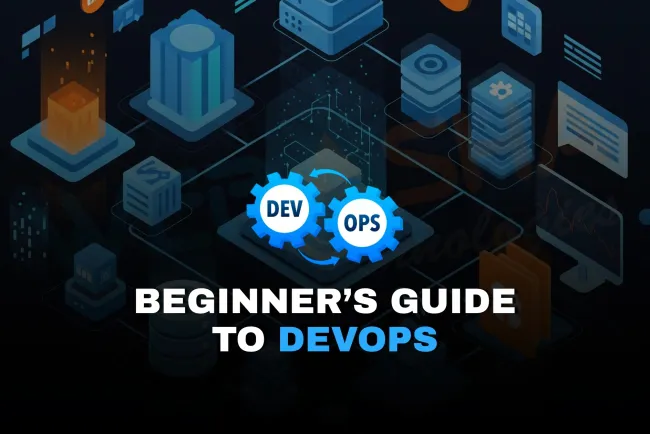What Is Platform Engineering? How Secure Self-Service Infrastructure Is Transforming DevOps in 2025
Discover how platform engineering and secure self-service infrastructure are reshaping DevOps. Learn how internal developer platforms (IDPs) improve security, boost developer speed, and simplify compliance by design.

In the high-speed world of modern software development, developers are building, deploying, and scaling faster than ever. But with speed comes risk. Every new microservice, every cloud-native app, and every container can open the door to vulnerabilities—unless you have a smart way to control it all.
Enter Platform Engineering and Secure Self-Service Infrastructure—two game-changing concepts that are transforming how organizations handle security, speed, and scalability at once.
Let’s break it down in plain language, with real-life examples and a curious mind.
What Is Platform Engineering (And Why Should You Care)?
Think of platform engineering as building a secure, internal “developer playground”—a system that’s already got the tools, security rules, and environments ready to go. Developers just jump in and build things without needing to set up everything from scratch.
These internal systems are called Internal Developer Platforms (IDPs). They help developers:
-
Deploy code safely
-
Access shared services (like databases, CI/CD tools, and monitoring)
-
Follow security-by-design principles automatically
So instead of worrying about compliance or setting up firewalls, your developers are focusing on building great software—safely.
What Is Secure Self-Service Infrastructure?
Self-service infrastructure allows teams to spin up their own environments, servers, or services on demand—but with pre-built guardrails in place.
Imagine you’re a developer. You need a test environment. Instead of opening a ticket and waiting days, you just click a button—and boom, you’ve got it. But behind the scenes, security, permissions, monitoring, and compliance are baked right in.
This combo of self-service + security = a dream for modern DevOps teams.
Why Is This Shift Happening Now?
Three big forces are driving the rise of platform engineering and secure IDPs:
-
Cloud complexity is exploding.
Cloud-native, containers, IaC—things move too fast for traditional ops teams to handle every change manually. -
Security risks are more real than ever.
A single misconfiguration in a Terraform script or Kubernetes pod can expose your system. Automated controls help reduce this risk. -
Dev teams want autonomy without chaos.
Devs want freedom—but you still need consistency, compliance, and visibility. IDPs bridge this gap.
What’s Inside a Secure Platform Engineering Stack?
A great platform engineering setup includes:
| Component | Purpose |
|---|---|
| Internal Developer Platform (IDP) | Central hub for dev tools, APIs, CI/CD |
| Policy-as-Code (PaC) | Automates compliance and security policies |
| Infrastructure as Code (IaC) | Reproducible infrastructure (e.g., Terraform, Pulumi) |
| RBAC & IAM Controls | Ensures the right people have the right access |
| Audit & Logging Systems | Tracks what happens and when for compliance |
| Self-Healing Pipelines | Automatically fix issues or roll back vulnerable deployments |
All of this is built with security by design—not added on later.
Real-World Example: How Google Uses Secure Platforms
At Google Cloud, developers use Borg (an internal platform like Kubernetes) to deploy code. Everything is self-service, but it’s wrapped in tight access controls, vulnerability scanning, and automated rollbacks. No human babysitter needed—yet it’s incredibly secure.
That’s the power of secure platform engineering.
✅ Benefits at a Glance
-
Security baked into every environment
-
Faster development and deployment cycles
-
Built-in compliance (HIPAA, SOC2, PCI-DSS, etc.)
-
Consistency across teams and tools
-
Less friction between Dev, Sec, and Ops
How to Get Started
If you’re building out a secure platform for your org, start with:
-
Define guardrails. What must be secure by default?
-
Choose the right tools. Look for Terraform, Open Policy Agent, Backstage, or Port.
-
Build reusable templates. Standardize environments for dev, test, and prod.
-
Train your teams. Empower devs to use the platform with confidence.
-
Automate everything. From patching to scanning to access control.
The Future of DevSecOps: Secure Platforms as the Norm
By 2025, more than 60% of companies will adopt internal platforms to streamline delivery and reduce risk, according to industry research. In the same way CI/CD became standard a decade ago, secure IDPs are becoming the new DevSecOps normal.
So the question isn’t if you should adopt platform engineering—it’s how fast you can start.
FAQ:
What is platform engineering in DevOps?
Platform engineering is the practice of building and maintaining internal tools and platforms that help developers deploy and manage software efficiently and securely.
What is a secure self-service infrastructure?
It's a setup where developers can access ready-to-use infrastructure components—like databases, environments, and services—safely and without waiting for manual approvals.
How does platform engineering improve security?
It enforces security best practices automatically through reusable components, guardrails, and policy-as-code within internal developer platforms (IDPs).
What are Internal Developer Platforms (IDPs)?
IDPs are custom-built platforms that provide developers with standardized, secure environments for writing, testing, and deploying code.
Why is platform engineering important for DevOps teams?
It reduces operational complexity, speeds up deployments, and ensures consistent security and compliance across environments.
How does platform engineering support compliance?
By embedding compliance checks directly into the platform using automation and predefined rules, reducing manual errors.
Can platform engineering help with faster CI/CD?
Yes, it provides pre-configured tools and environments that developers can use immediately, speeding up the continuous integration and deployment process.
What is meant by ‘security-by-design’ in platform engineering?
It means security is built into the architecture and workflows of the platform from the start, not added later as an afterthought.
How does self-service infrastructure reduce risk?
It removes manual, ad-hoc provisioning, minimizing human error and improving traceability.
Is platform engineering only for large organizations?
No, even small and mid-sized teams benefit from reusable, secure, and consistent development environments.
What tools are used in platform engineering?
Popular tools include Kubernetes, Terraform, Backstage, ArgoCD, Helm, and service catalogs.
How is GitOps related to platform engineering?
GitOps is often used to manage platform configurations and deployments declaratively, making platform management safer and version-controlled.
How does policy-as-code work in a self-service platform?
It allows teams to define and enforce rules (like access control or security policies) as code that runs automatically in the platform.
Can platform engineering reduce alert fatigue for security teams?
Yes, by shifting security left and standardizing configurations, fewer misconfigurations and alerts make it to production.
Does platform engineering support multi-cloud setups?
Yes, it can abstract complexity and offer consistent workflows across AWS, Azure, GCP, and on-prem environments.
What are examples of self-service infrastructure components?
Prebuilt containers, test environments, secure API endpoints, cloud resource templates, and monitoring dashboards.
Is secure IaC part of platform engineering?
Absolutely. Infrastructure as Code (IaC) templates are hardened and reused within platforms to maintain secure and consistent setups.
What is developer-first security in the context of platform engineering?
It means making security tools easy for developers to use, embedding them in their workflows without slowing them down.
How does platform engineering help with onboarding new developers?
New developers get instant access to consistent, ready-to-use environments with all security and compliance policies already embedded.
What are the benefits of using internal platforms over public cloud consoles?
Internal platforms are customized to enforce security and compliance and reduce errors that commonly occur in cloud GUIs.
How does platform engineering reduce silos between teams?
It centralizes operations, security, and development efforts into a unified system everyone uses and understands.
Can developers customize self-service options in IDPs?
Yes, within the guardrails set by the platform team, developers often have flexibility to configure services as needed.
How does platform engineering improve developer productivity?
It removes bottlenecks like waiting for manual provisioning or troubleshooting infrastructure, allowing developers to focus on coding.
What role does observability play in platform engineering?
Observability is built into the platform to monitor performance, detect issues, and improve security in real time.
Can platform engineering reduce cloud costs?
Yes, standardized infrastructure prevents overprovisioning and provides visibility into resource usage.
How do companies measure the ROI of platform engineering?
Metrics include faster deployment times, fewer incidents, improved compliance, and happier developer experiences.
What is a golden path in platform engineering?
It’s a secure, approved way of building and deploying software that’s optimized for speed and safety.
How do platform engineers work with security teams?
They collaborate to bake security requirements into tools and workflows, ensuring continuous compliance.
Is Kubernetes necessary for platform engineering?
Not always, but it’s commonly used as the foundation for containerized, scalable, and secure platform environments.
How is platform engineering evolving in 2025?
It’s becoming more automated, security-driven, and developer-centric—paving the way for scalable, cloud-native DevOps.














![Top 10 Ethical Hackers in the World [2025]](https://www.webasha.com/blog/uploads/images/202408/image_100x75_66c2f983c207b.webp)








